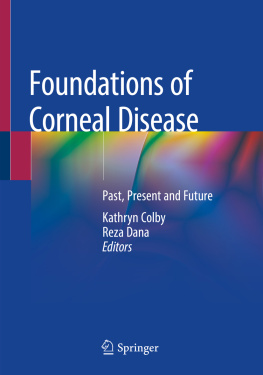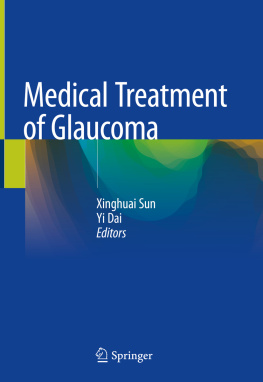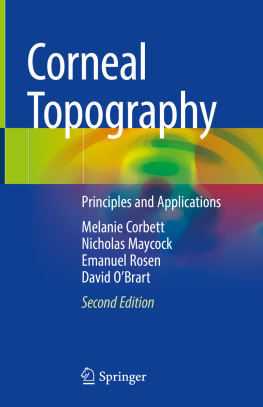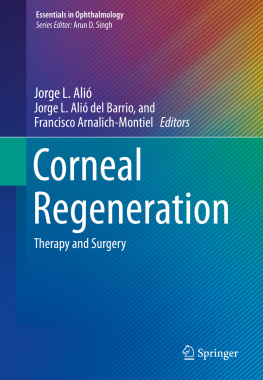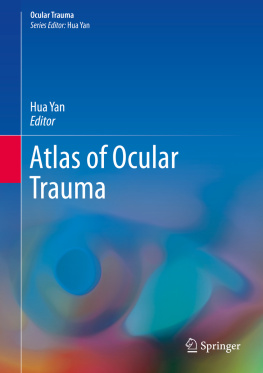Controversies in the Management of Keratoconus
Editor
Adel Barbara
Medical Director of IVISION, Refractive Surgery and Keratoconus Treatment Center, Haifa, Israel
ISBN 978-3-319-98031-7 e-ISBN 978-3-319-98032-4
https://doi.org/10.1007/978-3-319-98032-4
Library of Congress Control Number: 2018962165
Corrected Publication 2019
Springer Nature Switzerland AG 2019
This work is subject to copyright. All rights are reserved by the Publisher, whether the whole or part of the material is concerned, specifically the rights of translation, reprinting, reuse of illustrations, recitation, broadcasting, reproduction on microfilms or in any other physical way, and transmission or information storage and retrieval, electronic adaptation, computer software, or by similar or dissimilar methodology now known or hereafter developed.
The use of general descriptive names, registered names, trademarks, service marks, etc. in this publication does not imply, even in the absence of a specific statement, that such names are exempt from the relevant protective laws and regulations and therefore free for general use.
The publisher, the authors, and the editors are safe to assume that the advice and information in this book are believed to be true and accurate at the date of publication. Neither the publisher nor the authors or the editors give a warranty, express or implied, with respect to the material contained herein or for any errors or omissions that may have been made. The publisher remains neutral with regard to jurisdictional claims in published maps and institutional affiliations.
This Springer imprint is published by the registered company Springer Nature Switzerland AG
The registered company address is: Gewerbestrasse 11, 6330 Cham, Switzerland
I dedicate this book to every one who utilizes science for the welfare and progress of humanity, to every one who gets up in the morning and lightens a candle in order to reduce the darkness of inequality and suppression, to every one who tries to make this world better for human beings regardless of their color, race, nationality, and religion.
Adel Barbara
Foreword
Following his excellent and comprehensive book on keratoconus, Textbook on Keratoconus: New Insights , Dr. Adel Barbara has once again come up with a timely textbook on a thought-provoking topic Controversies in the Management of Keratoconus .
With the explosion of new treatment options and large potential combinations of collagen corneal cross-linking (CXL) with other treatment modalities, there is controversy as to the most appropriate manner in which to combine CXL with other currently accepted treatment modalities.
This book is extremely comprehensive, covering more than 30 chapters by renowned experts in the field, and treatment modalities which are covered are epi-on vs epi-off, accelerated treatments, customized CXL, and the pros and cons of phakic IOLs combined with CXL.
The book also covers other pertinent topics which relate to assessing treatment outcomes such as the definition of progression in keratoconus, the question if keratoconus is an inflammatory disease, and the significance of the demarcation line after CXL.
It also includes alternative technologies to CXL, additional means to improve visual acuity (VA) after intracorneal ring segments (ICRS), a chapter on photorefractive keratectomy (PRK) in keratoconus (KC), and a chapter by Dr. Barbara on how to navigate through the controversies. Interestingly, there is also a chapter on biomechanics in KC and one on ICRS.
Interesting, relevant, and controversial topics which any physician, interested in using cross-linking, would find stimulating include: collagen cross-linking Dresden protocol (why to stick to it), customized collagen corneal cross-linking for the treatment of keratoconus, beyond the Dresden protocol, optimization of cross-linking, and collagen corneal cross-linking for the treatment of keratoconus in the pediatric group. Other topics include alternative methods for halting the progression of keratoconus, photorefractive keratectomy for the treatment of keratoconus and forme fruste keratoconus, Athens protocol for the treatment of keratoconus, photorefractive keratectomy combined with CXL (why not?), intrastromal corneal rings for the treatment of keratoconus (do they halt the progression of the disease), why to implant intrastromal corneal rings in keratoconus? and how to improve vision after successful intracorneal rings (ICRS).
It also includes phakic lenses for the treatment of keratoconus (why yes and why not), PKP versus DALK, the best approach for CXL from the biomechanical point of view, and toric IOLs in cataract surgery of KC patients.
Once again, Dr. Barbara has hit a home run in providing a book co-authored by leading experts in the field. Any doctor dealing with KC would find this book very valuable, and those patients treated by cross-linking are sure to benefit and will hopefully see optimized outcomes following CXL treatments.
Yaron Rabinowitz
Introduction
Adel Barbara
Why a book on controversies in the management of keratoconus (KC)? Simply because there are still controversies in every topic that deals with KC, whether it is the epidemiology, diagnosis, pathology, or management of the disease.
KC is classically defined as a noninflammatory corneal disease; this definition is questioned, and the presence of higher rates inflammatory mediators in the tear film of KC patients supports the inflammatory contribution to the development of KC. Eye rubbing is advocated as causative and aggravating factor in keratoconus; the mechanism is mechanical and inflammatory, and some researchers believe that stopping eye rubbing will stop keratoconus formation and progression altogether; this theory is questioned.
Epidemiology of the diseases attracts controversies; higher incidence and prevalence have largely been attributed to advances in imaging and detection, partly driven by the boom in refractive surgery. Are we witnessing a true increase in the incidence of keratoconus? Is it always a bilateral disease? What are the roles of genetics, ethnicity, geography, and the environmental factors, and what are the factors that contribute to the development and progression of KC? What is the role of ultraviolet light exposure, eye rubbing, contact lenses wear, and allergic and atopic eye diseases?
Until two decades ago, there were two treatment modalities only for keratoconus: the first is rigid gas-permeable contact lenses (CLs), and when this fails, then penetrating keratoplasty (PKP) was offered as the ultimate solution for the disease. Very simple, two choices, no more.
Since then, huge advancements were introduced to this field in terms of diagnosis and treatment. In the diagnostic field, new corneal topography and tomography devices which enable earlier detection of the disease are available not only in the advanced centers for refractive surgery but also in general ophthalmic clinics and even in high street opticians. In the treatment field, new treatment modalities have emerged such as collagen corneal cross-linking (CXL) for arresting the progression of the disease, intracorneal ring segments (ICRS) for vision improvement, photorefractive keratectomy either alone or combined with CXL for corneal remolding and vision improvement, and phakic intraocular lenses (pIOLs) mainly toric pIOLs to correct ametropia due to KC. Lamellar keratoplasty such as deep anterior lamellar keratoplasty (DALK) is replacing PKP as the primary corneal grafting technique with better safety profile. Furthermore, we are witnessing innovations and improvements in the design of CLs such as soft keratoconus lenses and hybrid, scleral, and semi-scleral CLs. The availability of these techniques improves quality of life and also increases choice and patients expectations.






